 For more information on the topic of the U.S. water supply and distribution, check out the University of Michigan’s Center for Sustainable Systems' U.S. Water Supply and Distribution Factsheet.
For more information on the topic of the U.S. water supply and distribution, check out the University of Michigan’s Center for Sustainable Systems' U.S. Water Supply and Distribution Factsheet.
The curated collection below contains 11 videos, 3 podcasts and 5 games/activities. To access the resource, click on the image below the resource title.
Videos:
Water | Sesame Street
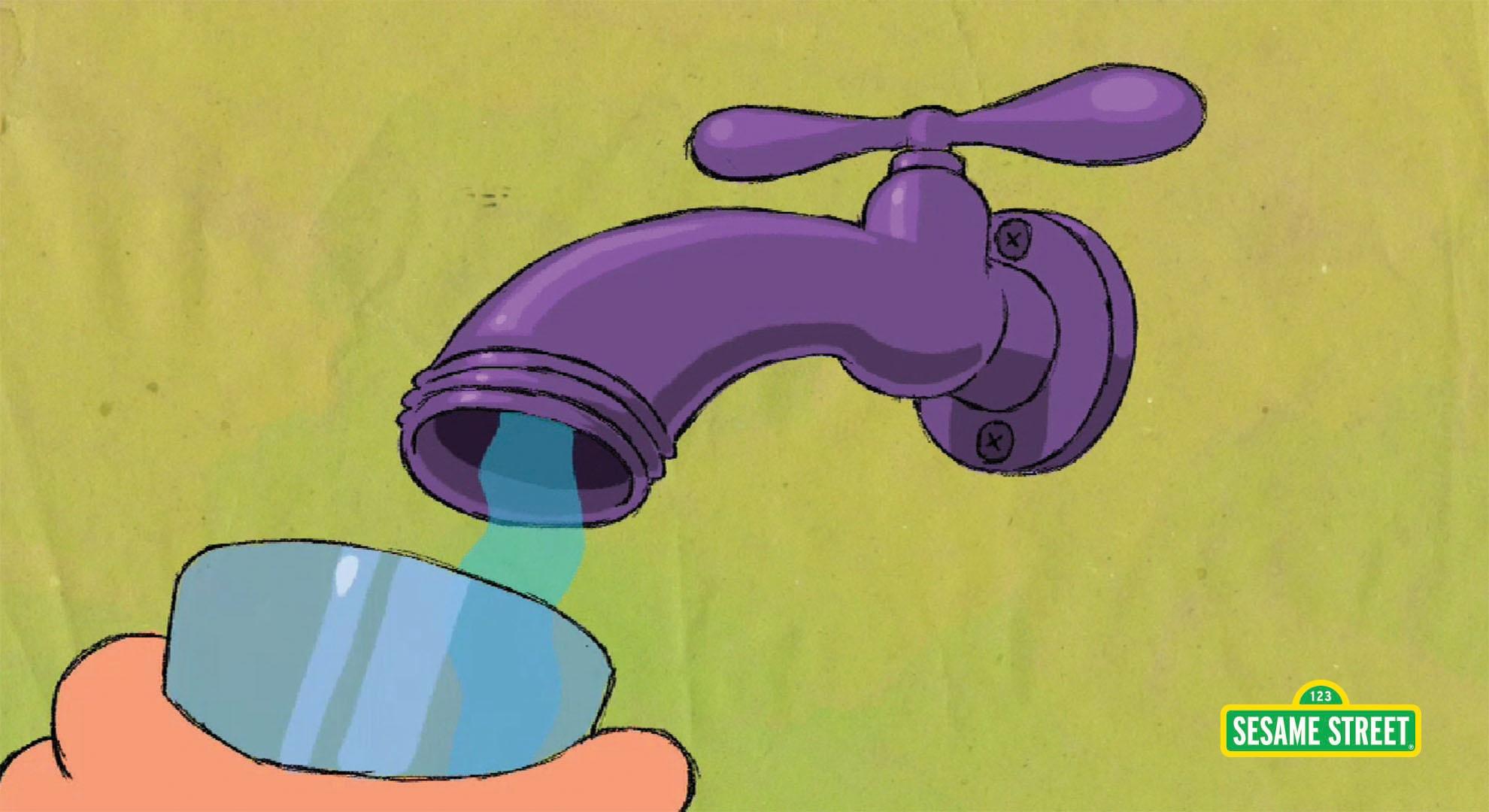 Grade Level: PK- K
Grade Level: PK- K
Duration: The first video is 54 seconds, and the second video is 1 minute and 16 seconds.
Description: These animated music videos from PBS KIDS’s Sesame Street discuss saving water and the importance of water on earth. These videos are a fun and memorable way for young students to learn about the topic of water conservation.
H2O-NO! - Fresh Water Problems: Crash Course Kids #33.1
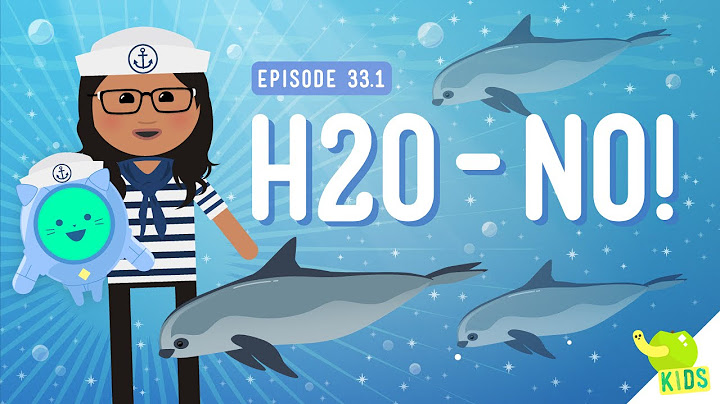 Grade Level: 2-5
Grade Level: 2-5
Duration: 4 minutes and 59 seconds
Description: This video from Crash Course Kids by PBS Digital Studios discusses the importance of water, specifically how freshwater is necessary to human survival. Students will learn that less than 1% of the water on earth is accessible freshwater and about freshwater sources.
A Fresh Future: Crash Course Kids #33.2
 Grade Level: 2-5
Grade Level: 2-5
Duration: 4 minutes and 10 seconds
Description: This video from Crash Course Kids by PBS Digital Studios discusses how humans can impact earth’s freshwater supply. Students will also learn ways people can amend the damage that they do to the water supply.
Water Fix!: Crash Course Kids #36.2
 Grade Level: 2-5
Grade Level: 2-5
Duration: 5 minutes and 28 seconds
Description: This video from Crash Course Kids by PBS digital studios discusses how people can cope with water shortages. Students will learn about solutions such as bringing water from other sources, desalination, and recycling wastewater.
Race to Save Water | PLUM LANDING on PBS KIDS
 Grade Level: K-5
Grade Level: K-5
Duration: 4 minutes 42 seconds
Description: Through this short video from PBS KIDS’s Plum Landing, students will learn ways to conserve water and about the typical water usage in a family. They will watch as two families compete to see who can save the most water in a week.
Water Falls: Show Me the Water
 Grade Level: 3-5
Grade Level: 3-5
Duration: 2 minutes 27 seconds
Description: In this short video from NASA, provided by PBS LearningMedia, students will learnthe ways that humans use the limited supply of freshwater on earth. The graphic associated with this video can help students to visualize how water is used in the U.S.
Water Treatment Plant
 Grade Level: 3-5
Grade Level: 3-5
Duration: 2 minutes 22 seconds
Description: In this short video from ZOOM, provided by PBS LearningMedia, students will see inside a water treatment plant and learn about the process of making clean drinking water.
Watershed Management: Ways of Watersheds | UNC-TV Science
 Grade Level: 3-12
Grade Level: 3-12
Duration: 1 minute and 12 seconds
Description: This video from UNC-TV Science, provided by PBS LearningMedia, discusses the importance of taking care of local watersheds. Students will learn how humans can manage the quantity and quality of the water in their local watershed by planting rain gardens, reducing erosion, and keeping out pollution.
When is water safe to drink? - Mia Nacamulli
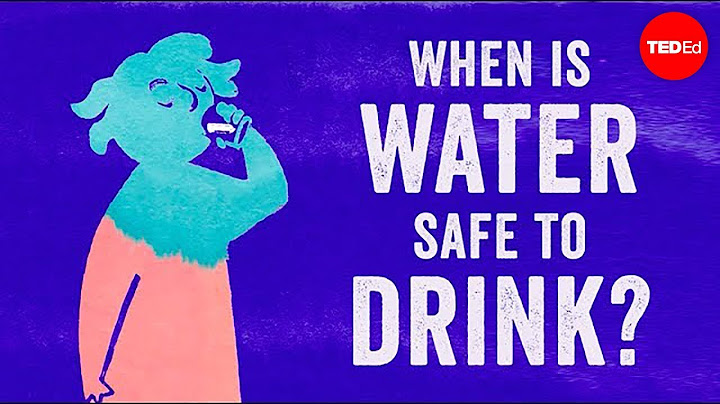 Grade Level: 5-12
Grade Level: 5-12
Duration: 5 minutes and 23 seconds
Description: This TED-Ed video from PBS digital studios discusses different sources of water contamination and the solutions used to ensure that drinking water is clean. Students will learn the steps of the water treatment process including sedimentation, filtration, and disinfection.
Water Works (Full Program)
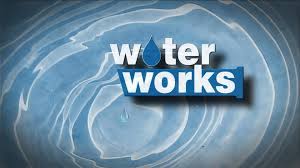 Grade Level: 9-12
Grade Level: 9-12
Duration: 26 minutes 44 seconds
Description: This documentary from PBS explains water quality, pollution, wastewater treatment, drinking water treatment, and water conservation. Students will also learn the difference between well water and tap water and what steps must be taken to ensure water quality.
Poison Water in Flint Affects Everyone’s Health—Especially Kids | PBS NewsHour
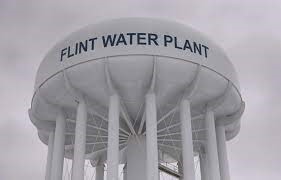 Grade Level: 6-12
Grade Level: 6-12
Duration: 11 minutes 12 seconds
Description: This video from PBS NewsHour, provided by PBS LearningMedia, discusses the Flint water crisis. Students will learn how the Flint water crisis happened, what it meant for the people of Flint, and why having safe drinking water is so important.
Podcasts:
Climate Change Is Threatening The U.S. West's Water Supply
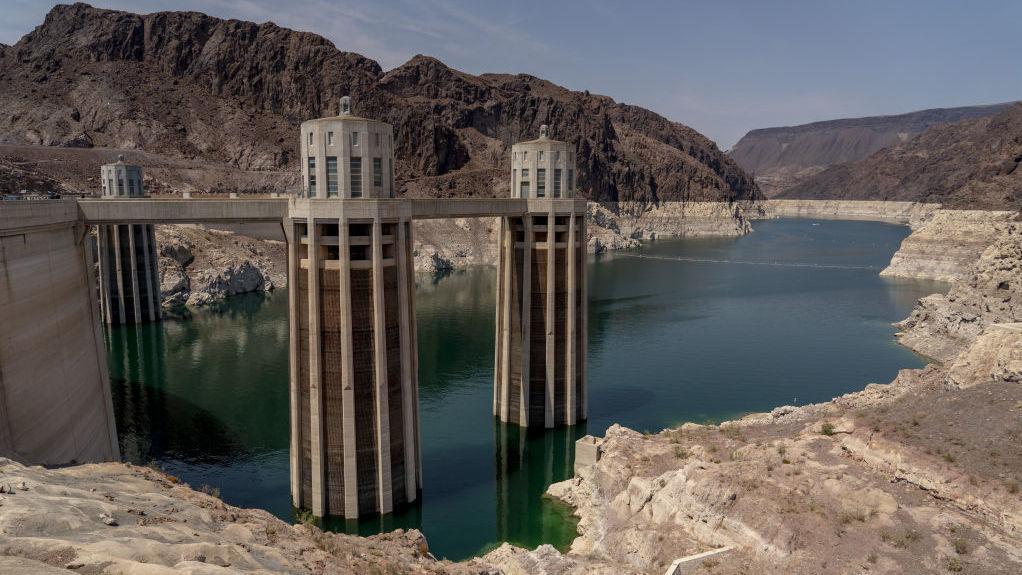 Grade Level: 6-12
Grade Level: 6-12
Duration: 12 minutes 10 seconds
Description: This episode of Short Wave from NPR discusses the water shortage in the western United States. Students will learn how the West's water supply has been affected by climate change and the over-allocation of water sources such as the Colorado River.
The Drought In The Western U.S. Is Getting Bad. Climate Change Is Making It Worse
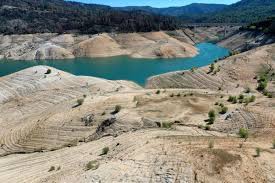 Grade Level: 6-12
Grade Level: 6-12
Duration: 4 minutes 25 seconds
Description: This short NPR story discusses how the water supply of western states is shrinking due to both climate change and previous overestimates of how much water the Colorado River could supply. Students will learn the challenges that western states face with their dwindling water supply and will gain a better understanding of why conserving water is so important.
Water: Keeping It Safe
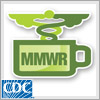 Grade Level: 6-12
Grade Level: 6-12
Duration: 4 minutes 36 seconds
Description: This short podcast from the Centers for Disease Control and Prevention (CDC) discusses the safety of the U.S. water supply and how water can become contaminated. Additionally, students will learn about health problems that can result from contaminated water.
Games/Activities:
Test Your WaterSense Game
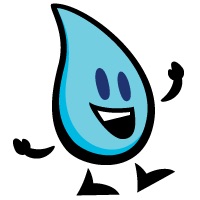 Grade Level: 2-6
Grade Level: 2-6
Duration: Varies
Description: In this game from the EPA, students will help Flo, a water droplet, navigate safely through pipes while dodging water-wasting monsters. Students will guide Flo to a sink, toilet, hose, and drinking glass, which are safe zones, and will try to collect bonus water droplet along the way. When they reach a safe zone or collect a bonus water droplet, students must answer questions about water use. This computer game is a great way for students to review or learn some fun facts about water use and water conservation. Note: After clicking the link, scroll down to the bottom of the “WaterSense for Kids” page to play the game. It should also be noted that the score for the number of questions answered correctly given at the end of the game may not be accurate since students may not have had the opportunity to answer all 12 questions.
Hydro Logic
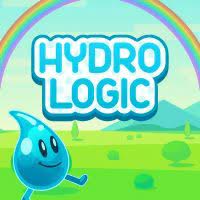 Grade Level: 3-5
Grade Level: 3-5
Duration: Varies
Description: In this game from ABCYa, students will learn about different steps in the water cycle as they guide Enki, a water droplet, to reach different goals. The game covers topics such as evaporation condensation, and transpiration.
Water Word Scramble
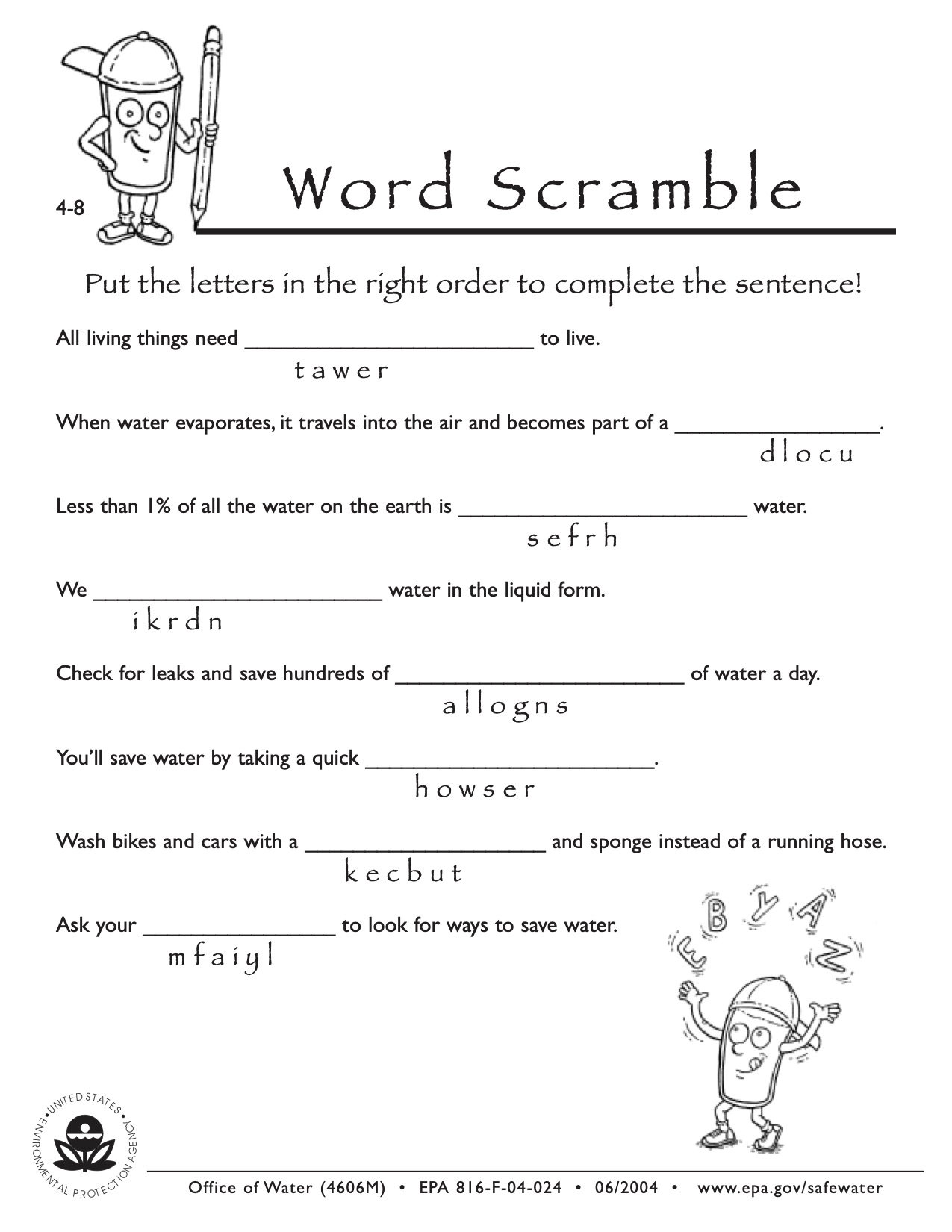 Grade Level: 3-6
Grade Level: 3-6
Duration: Approximately 15 minutes
Description: In this word scramble activity from the Environmental Protection Agency (EPA), students will unscramble words based on a passage about water and water conservation, learning ways they can save water as they complete the activity.
Water Filtration Activity
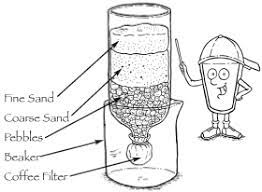 Grade Level: 4-8
Grade Level: 4-8
Duration: Approximately 45 minutes
Description: In this activity from the Environmental Protection Agency (EPA), students will build and test their own water filter. Through this activity, students will learn the process by which municipal water plants treat drinking water.
What's Your Water Footprint: Water Footprint Calculator
 Grade Level: 6-12
Grade Level: 6-12
Duration: Approximately 15 minutes
Description: This calculator from the GRACE Communications Foundation helps students calculate their water footprint. Students will answer questions to help determine their indoor water use, outdoor water use, and virtual water use. In the end, they will learn what activities in their lives use the most water and can learn tips to decrease their water usage.